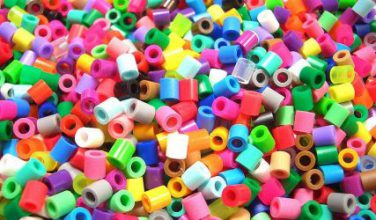PolymPart: Plastics are in the news everyday – mainly for negative reasons linked to their environmental impact. Most people know the problems plastics can cause in the environment. It seems that their positive characteristics of being hard wearing and having a long life are also the characteristics that make them enemies to our environment.

The ideal for some people might be a world without plastics, but, plastics are too useful and cheap to disappear from our lives. An alternative to dispensing with plastics altogether is to create plastics that are easier to decompose at the end of their useful lives. So instead of being buried on a landfill site for thousands of years after use or floating around an ocean waiting to be swallowed by an unsuspecting whale – we develop plastics that degrade safely when we have finished with them.
Bacteria made plastics
Traditionally plastics are non-biodegradable and are made from petroleum residues – organic molecules left over from the refining of crude oil into petrol and oil. But researchers are looking for methods of making plastics from other sources – more environmentally friendly and renewable – using newer processes.
One of the best known and studied biodegradable plastics are known as PHAs – polyhydroxyalkanoates. They are polyesters that are produced in nature by microorganisms – one route involves bacterial fermentation of sugar. The polymers produced are thermoplastic – soften on heating and harden on cooling – and can be processed on conventional processing equipment.
Carbon sinks and energy supplies
Microorganisms produce PHAs inside their cells when the conditions are right – physiological stress is one condition thought to cause microorganisms to produce PHAs. The microorganisms synthesize PHAs as a carbon and energy store for future use when other energy sources are not available. And because microorganisms can break down PHAs – the stuff is biodegradable. If we have no further use for a PHA, microbes can simply be employed to break it down into carbon dioxide and water.
Fine tuning a plastic
The family of PHA polymers can be used for many different applications. Consumer products and medical devices are just some of the uses that PHA polymers are used for. But to make them more useful, scientists are investigating how they can fine tune their manufacture and disposal. Specifically, they are looking at investigating which microbes are better at producing and decomposing the polymers.
Chromatography Investigates Biodegradable Plastics
One of the key techniques used for this analysis is chromatography. Chromatography is used to determine the type and quantity of polymer within the microorganism. Chromatography is widely used to screen for products as discussed in the article, Addressing the Need for Faster Screening and Fraction Collection for Chiral and Achiral SFC. By fine tuning the process and using renewable sources of carbon such as plants, it will be possible to grow biodegradable plastics using natural processes. This way it might be possible to keep using plastics and not damage the environment.
Source: https://www.chromatographytoday.com/news/supercritical-fluid-sfcgreen-chromatography/45/breaking-news/chromatography-investigates-biodegradable-plastics/47794

